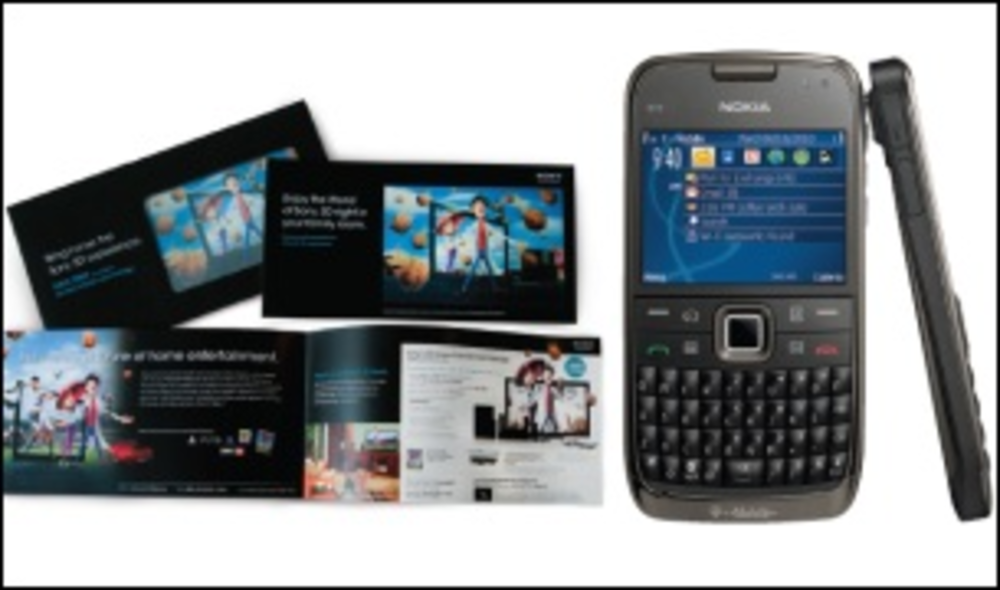Consumer technology companies are refining their direct marketing strategies in the face of unprecedented competition. It includes everything from optimizing direct mail lists to using social media to reach gadget-crazed consumers before they purchase.
In July, the Consumer Electronics Association estimated shipment revenues in the consumer electronics industry would increase by 3% — to $174.9 billion — in 2010, a healthy boost from a projection earlier in the year of just 0.3%. The association attributed the revised spike to the demand for new consumer technology products, including 3D TVs, smartphones, Blu-ray players, e-readers and mobile computing solutions such as tablets, and the recently released iPad.
“Direct marketing has become extremely important, and one of the primary reasons is because with any consumer electronics product, people exhibit a lot of anonymous shopping behavior before they actually purchase,” says Michele Fitzpatrick, SVP, strategy and insights for The Agency Inside Harte Hanks. “But if you can market directly to known consumers, you’ll have the ability to know when they’re in the market and, therefore, be able to influence their purchase decision.”
To do that, most manufacturers are mining deep into their existing databases to track everything from customer purchases and product preferences to price points and purchase frequency.
Case study: Nokia invites
user app ideas
user app ideas
Sony Electronics, for example, uses a hybrid segmentation scheme based on e-mail engagement and RFM — recency (how long ago someone bought), frequency (how often they buy) and monetary (how much they spend), says Jennifer Geddy, director, CRM and response marketing at Sony Electronics. Sony also adds predictive models to help identify key database prospects for particular product categories.
Like many consumer technology companies, direct mail and free-standing inserts (FSIs) that are added to newspapers or magazines continue to be “a very important part of the direct marketing mix,” says Geddy. An advertising campaign for the summer launch of Sony’s 3D-capable Bravia HDTVs, for example, included both direct mail and FSIs, in addition to e-mail and social media communications.
However, with the incredible growth of digital and mobile, Geddy says, “it becomes more important that we evolve our direct mail to be more relevant and timely.” To improve that relevancy, Sony Electronics uses personalization tactics which have shown to improve conversion and retention.
FSIs, however, have proved challenging because, despite careful market selection, “the households are still unknown to us,” says Geddy. Still, she says econometric modeling has proved FSIs drive sales, and Sony Electronics is now investigating ways to add QR codes and augmented reality to improve recipient engagement.
Other companies use social media to reach consumers in the purchase consideration phase. Kodak monitors and participates in conversations on its blogs and on other websites, says Tom Hoehn, director, interactive marketing and convergence media at Kodak. “We’ll never swoop in and say, ‘Hey, you can get 25% off that product you’re writing about’ — that’s the wrong way to do it,” he adds.
However, if they identify a cluster of shoppers undecided between two digital cameras — at least one a Kodak — Hoehn says they can direct those people to a post on Kodak’s blog where they’ve aggregated third-party reviews of the product. “It is all about knowing when we can actually add value to the conversations going on out there.”
To help identify these marketing opportunities, Kodak uses social media monitoring software; earlier this year, it hired Beth LaPierre as its first “chief listener,” who tracks, monitors and participates in online conversations related to Kodak.
Nokia is another company focusing its direct marketing activity on social media. “We want to interact with consumers where they consume content the most — online,” says Jason Dyer, head of online marketing for Nokia in North America.
This social media focus is reflected in a new campaign for the launch of its Nokia E73 Mode, which allows users to switch the interface between a “work” and “play” mode. In addition to communicating that benefit to consumers on its Facebook page and Twitter feed, “We’ve also engaged communities on sites where consumers are talking about work — how they don’t have enough time in their day,” says Dyer. Nokia is also working on some “viral stunts” it will seed on the Internet.
Sony indicated that it also plans to increase integration of its direct marketing efforts into the social media realm in the coming year.
The Agency Inside was hired earlier this year as Sony’s CRM AOR to help develop a strategy. Fitzpatrick says marketers can deploy tactics through social media to identify customers in the purchase funnel. For other clients it has created a personality quiz that, using an algorithm, matches certain types of people to certain products. They can then track users who take the quiz, and then click to the brand site.







